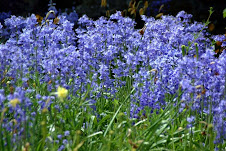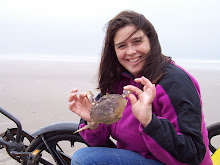Like all projects that I start I always over calulate the rewards and under estimate how much time, money, and energy my new project will take. So it is with starting a new garden project. Here are some ideas to make your first or new attempt at a garden both enjoyable and productive.
Start Small: I have been so sad in the past, when I clear a large area for growing and I end up producting only weeds. Starting small will give you the encouragement to continue working through the growing season. You will have a lot more success weeding and harvesting if you are able to stay up on your new work load. Try one of these two approachs. Either make your garden physically smaller and grow one of each plant you're interested in, or specialize in one or two products. The first will help you figure out which foods you really do like to grow and eat, and which ones you're actually good at growing. The second approach is for those of you who really want to use that whole naked acre to produce something. I recommend you plant it all in corn and potatos or some other similar crop. That way you are only using one or two types of watering, pest control, fertilizing, and harvesting techneques. You'll also get all your work done at one time with a high yield harvest.
How are going to Grow: Organic produce is all the rage right now, and rightly so. I really don't want my kids introduced to any more chemicals then they already eat with their Marshmallow Mateys. However, growing without chemicals is about twice the work. In order for us to stay up on our gardening we really need to spend about 45 minutes an evening in the garden. If that time commitment is too much, bite it and use some of the wonderful products that are out there. I like the old standard fertilizers or Miracle Grow, and Preen. If your not sold on the Organic method, use them. They make them because they work and it will definately lower your work output. If you are intereset in organic gardening, I'll have plenty more post about my favorite way to grow a garden.
Evaluating Your New Garden Area: What is your area like? Do you need to till up some grass? Are the only things growing right now weeds? New garden areas usually require some work either to clear it out or clean it up. Weeds are a good indicator or soil quality. Typically weeds like to grow in hard soil with poor nutrients. If this sounds like your current garden condition, you need to do a shovel test. Go to your area and dig a hole one shovel length deep. If you're not able to this easily, you need to plan on adding amendments to your soil. Amendments are any of the bagged products you find along the fence at Lowe's, and typically a new area is going to need at least a few of those bags. If your soil is very light colored you need to add compost. Compost=Nutrients. Feed your soil, and you feed your plants. If the soil is super hard even when wet, working a bale of peat moss into it will help your compaction problem. You may even want to consider starting your garden with raised beds. You'll have to fill your beds with some sort of soil. When your in charge of the new stuff you can make sure it's most productive and nutrient and you get better control over your project.
Next Time: You live in Idaho. Grow a Potato!
Thursday, April 15, 2010
Thursday, April 8, 2010
What to do in April
Now that the weather is starting to turn warmer I start to think about snacking on cherry tomatos fresh from the garden and all the sudden feel a need to put that whole garden in right now. April is your prep month for that big putting the garden in. Here's a few things to look forward to doing this month in preparation.
1. What is the condition of your garden soil? This is the time to turn your beds, add soil amendments and do any repairs to your support structures. If you're expanding your garden area you need to dig the new bad now.
2. What are you planting this year? Start by making your grand plan for planting. For example: Decide if you need to move your cold weather crops so they don't burn up on a hot day. I like to keep a garden journal and look back over what was successful the previous year and repeat it again. It's also a good time to put on your calender which weekends you need to plant which crops.
3. Do you want to grow something new? Do your research on the new planting you're trying. I always like to try a new plant or two, and it's always good to know what you can expect from your new arrival.
4. Plant your cool weather plants. If you haven't already planted peas, you'll want to get them right now, or it will get to blazing hot for you to harvest any. Other things that can be planted are cabbage, lettuce, potatos, and onions. Remember the average last frost date is May 10th. These cool lovers can take a few light frosts, and can give itchy garden fingers something to work at.
Next Time: First Time Gardener do's and don'ts
1. What is the condition of your garden soil? This is the time to turn your beds, add soil amendments and do any repairs to your support structures. If you're expanding your garden area you need to dig the new bad now.
2. What are you planting this year? Start by making your grand plan for planting. For example: Decide if you need to move your cold weather crops so they don't burn up on a hot day. I like to keep a garden journal and look back over what was successful the previous year and repeat it again. It's also a good time to put on your calender which weekends you need to plant which crops.
3. Do you want to grow something new? Do your research on the new planting you're trying. I always like to try a new plant or two, and it's always good to know what you can expect from your new arrival.
4. Plant your cool weather plants. If you haven't already planted peas, you'll want to get them right now, or it will get to blazing hot for you to harvest any. Other things that can be planted are cabbage, lettuce, potatos, and onions. Remember the average last frost date is May 10th. These cool lovers can take a few light frosts, and can give itchy garden fingers something to work at.
Next Time: First Time Gardener do's and don'ts
Subscribe to:
Posts (Atom)




